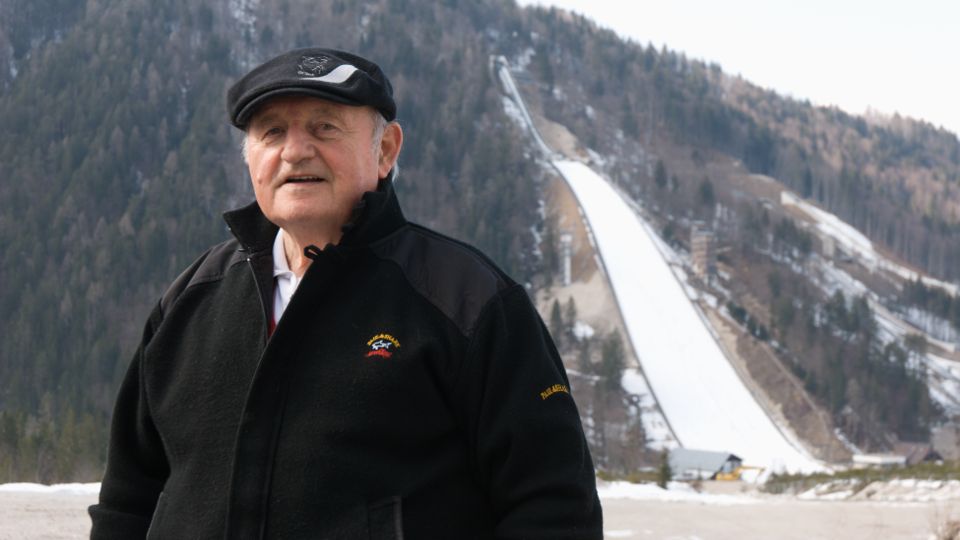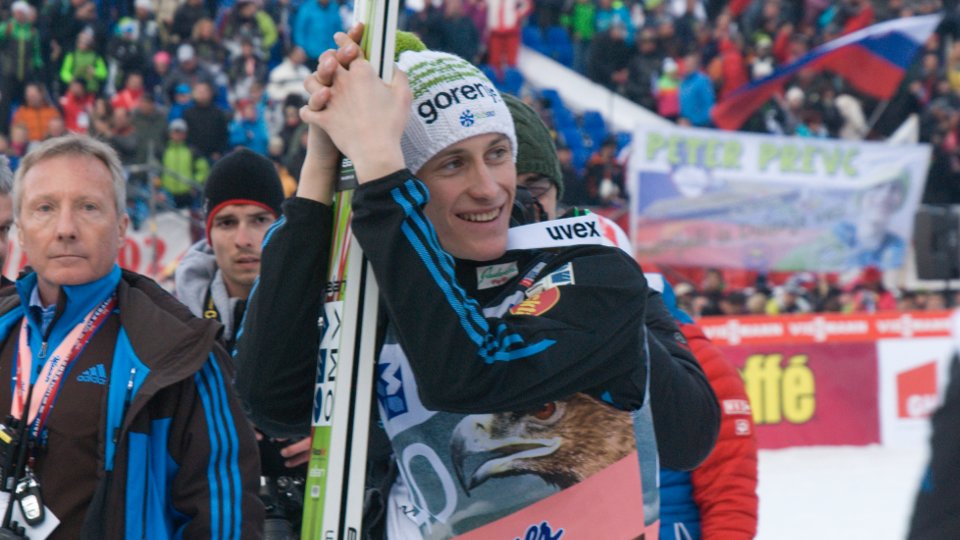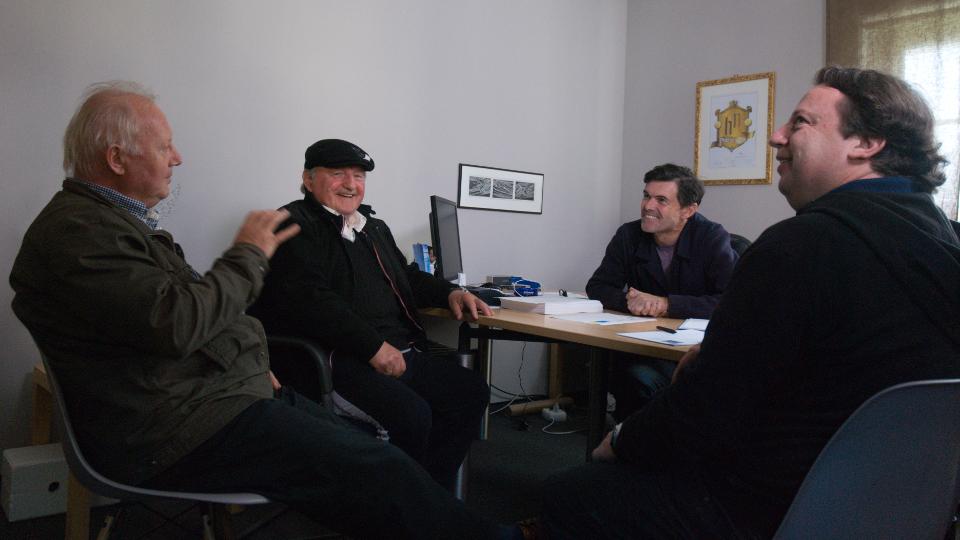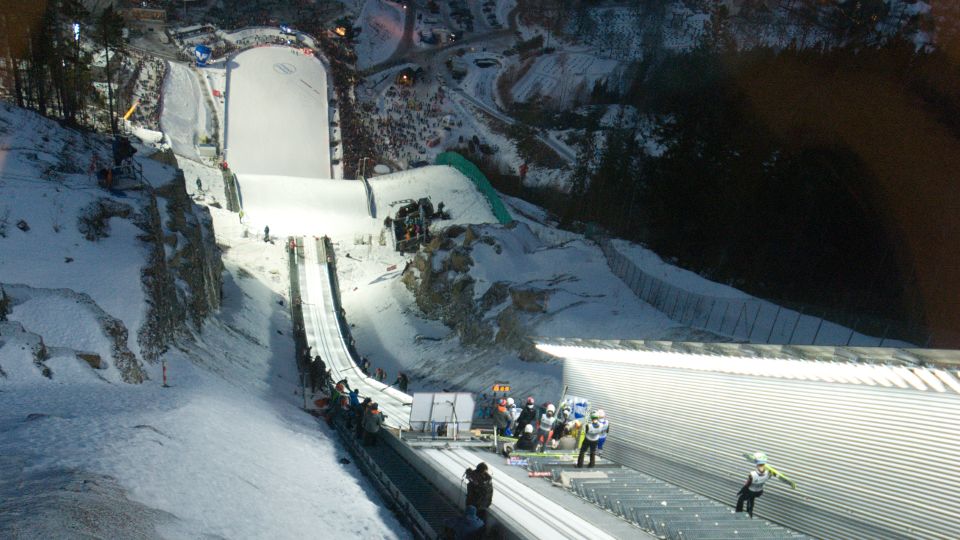



TO FLY!
LETETI
Three ski flying hills are in competition for the title of the largest facility in the world: Vikersund, Planica and Kulm. All three boast profiles designed by Janez Gorišek.Three ski flying hills are in competition for the title of the largest facility in the world: Vikersund, Planica and Kulm. All three boast profiles designed by Janez Gorišek.
His art of ski flying hill design was a product of his personal experience: he was a student ski jumping champion twice. He also won the first competition on the Ljubno hill, which is made in his profile after the reconstruction. Together with his brother, Lado, he designed the ski flying hill in Oberstdorf and the two Sarajevo Olympic ski jumping hills at Mount Igman. He derived the clothoid, basic curve in designing a ski jumping hill, from his knowledge in road construction. His intuition still makes him believe in the idea of a hill where it would be safe to fly 300 metres and more.
Planica in Slovenia is the cradle of ski flying. It was here that the first person jumped over 100 metres, and over 200 metres. In 1969, after the Gorišek brothers’ ski flying hill was constructed, they beat the world record four times. After 1985, Planica was the only place where world records were set, up until 2011 when Janez Gorišek and his son, Sebastjan, had taken part in the reconstruction of the hill at Vikersund, Norway. Johan Remen Evensen flew 246.5 metres in the trial round, and Planica lost the prestigious title of the largest ski flying hill in the world. The air is denser at Vikersund enabling longer flights. A peculiarity that even took the designers by surprise.
Peter Prevc was the first to fly over the magical mark of 250 metres in 2015. The world record lasted less than a day; Anders Fannemel took it back for the Norwegians flying 251.5 metres.
Planica wants the longest ski flight in the world. The advantage of Planica lies in its valley creating just the right headwind in early spring to enable levitation. The new ski flying hill can be enlarged three times, up to 275 metres. The Austrians want to join the race with their hill in Kulm. Under the former ski jumper Hubert Neuper, they have hired Janez Gorišek to design the hill. Ski flying competition organisers of the KOP association advocate new rules to be adopted and greater distances allowed. They are a family. Families as such have played a major role in the evolution of ski jumping and flying.
The height difference in all ski flying hills has remained the same for four decades. What changes are the profiles, and the preparation of a hill is different. Athletes use top quality skis, suits, and equipment. Slovenian manufacturers are leaders of the development of bindings and skis. Different makes enables different jumping techniques possible. Ski flying hill constructors and architects, innovators and manufacturers of equipment, snow groomer drivers and tramplers, competition organisers and coaches all do their best for a handful of athletes to be able to fly over 240 metres a few times in a year.
These top flyers are the strength of the sport. They must decide in a split second just when to take off from the table, find the right levitation attitude, approach the landing area and persist until they land safely in a perfect Telemark. They gain experience the flying feeling over the years. They want to fly.
This documentary is about the history of ski flying evolution, about the race for records. The film attempts to answer the question, how many best solutions need to be combined for the longest flight in the world? We covered the development of gear, the reconstruction of two ski flying hills, preparations and practice of top athletes. We chased away the wind in Kulm. We witnessed the first flight over 250 metres in Vikersund. And we awaited in awe a favourable headwind in Planica. But above all, we admired the people who dare to fly.